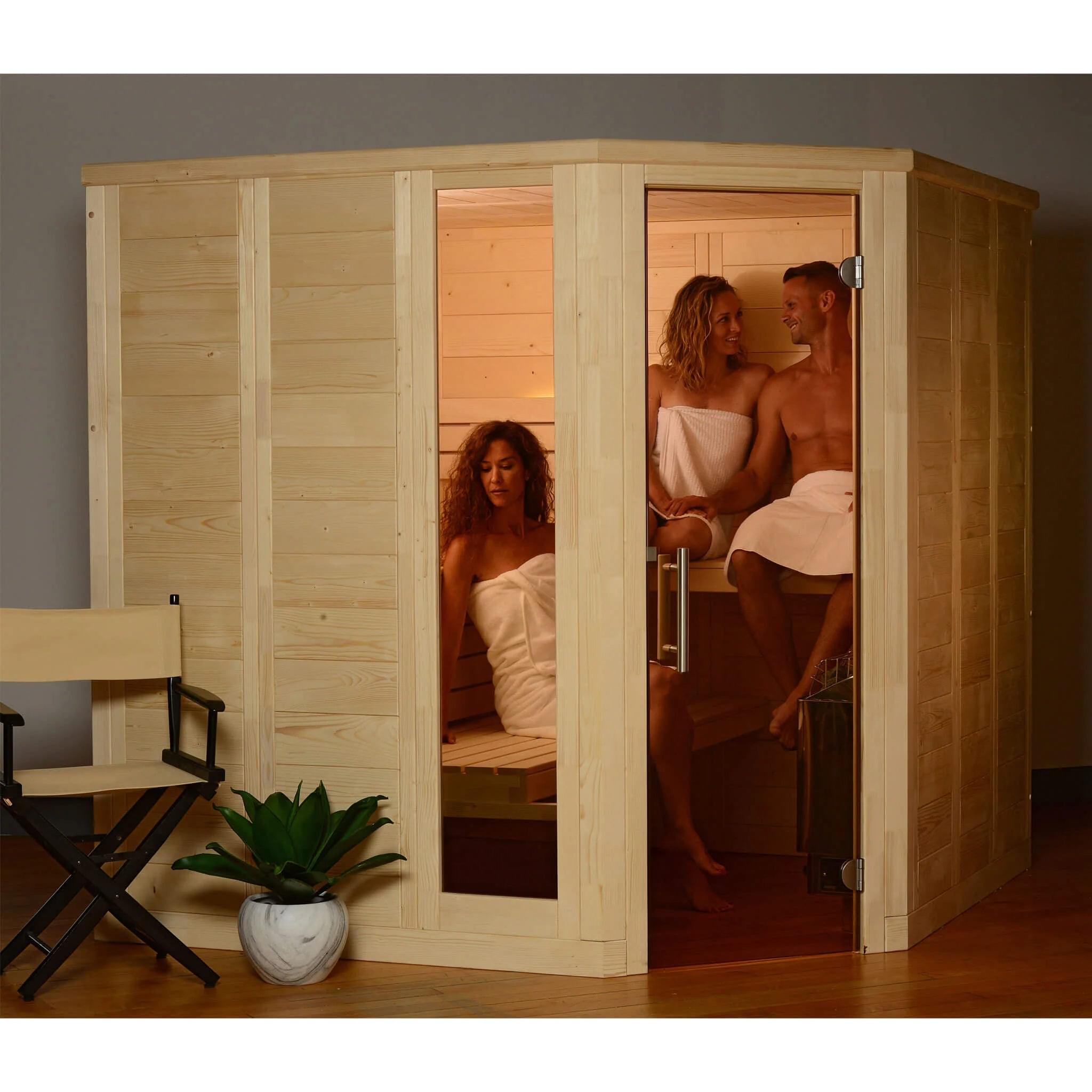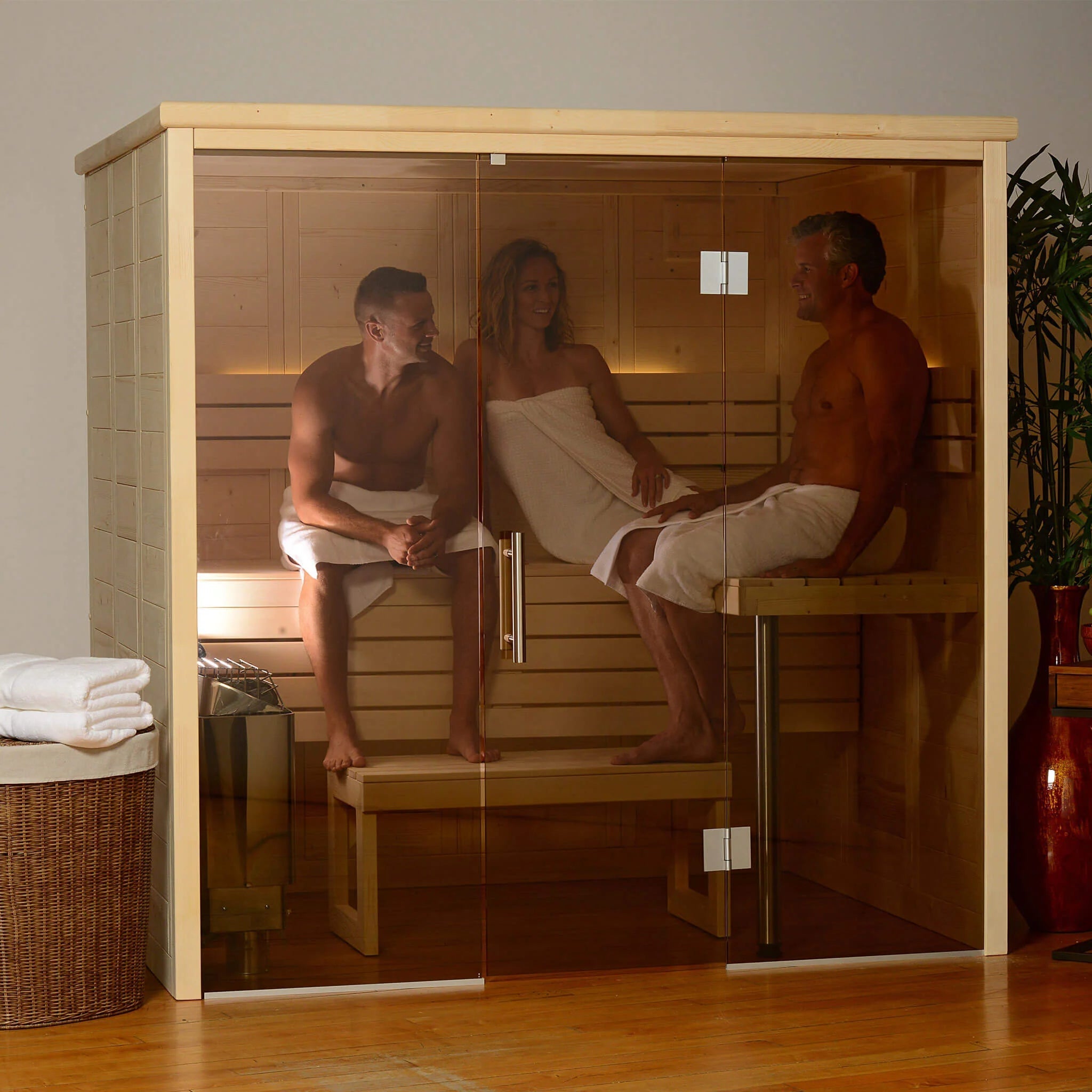Examine This Report about Traditional Sauna
Examine This Report about Traditional Sauna
Blog Article
The Single Strategy To Use For Traditional Sauna
Table of ContentsNot known Details About Traditional Sauna An Unbiased View of Traditional SaunaThe Only Guide to Traditional SaunaRumored Buzz on Traditional SaunaNot known Facts About Traditional Sauna
The majority of the weight lost in a sauna is water loss and is re-gained upon rehydrating. However, undeniably sauna can be a vital part of a healthy weight management program. To check out the distinctions between standard and IR saunas, I will certainly divide these right into proven, theoretical, and produced distinctions.Thus, the hottest point in the saunawhich goes to the ceiling straight above the sauna heateris normally between 185 and 190 F. Claims that a traditional sauna surpasses 200 F is just not real and not applicable for electrical saunas sold in the US. The temperature level for a far-infrared sauna is usually established in between 120 and 140 F; nonetheless, unlike the typical sauna, the goal in and IR space is not to attain a heat.
Due to this, the temperature distinction is almost pointless, since profuse sweating results in both sauna kinds, however the method of heating up the body is various. In an IR sauna the bather will certainly really feel warm and will sweat a lot, however at a lot reduced temperatures. Traditional Sauna. Therefore, if the objective is to spend longer durations of time in the sauna, the IR sauna is an excellent choice

Things about Traditional Sauna

When the heat is accomplished, the aspects cycle on and off to preserve the heat. Traditional Sauna. The majority of traditional sauna individuals enjoy pouring water over the rocks to develop vapor to raise sauna humidity degrees. The benefits of pouring water over the rocks consist of: making the area extra comfortable, moistening the nasal passages, and allowing the usage of aromatherapy by mixing vital oils with the water
In a far-infrared sauna, the warm front penetrate the body to efficiently heat up the body and raise the body core temperature. To achieve this boosted temperature, Far-infrared emitters create infrared power which is close to the same wavelength as that which the body normally emitsoften described as the "Important Range" of 7 to 14 microns), so the energy is well obtained by the body.
When the power enters the body, it creates the body temperature to enhance and eventually causes perspiration. In an infrared sauna it is necessary for the emitters/heaters to stay on blog here almost continuously. Because there is no mass of rocks to keep heat, the sauna will certainly cool down if the emitters closed off.
Things about Traditional Sauna
As stated above, the sauna bather in an infrared area desires to position himself before operating emitters to obtain maximum gain from the heat. The home heating time for the two areas can be extremely different, depending upon how the areas are utilized. For a traditional sauna, a bather needs to allow 30-40 mins for the room to attain a desired temperature level and to correctly pre-heat the rocks.
A well created sauna will typically accomplish a temperature level of 150-160 F in about 30-40 minutes. For hotter temperatures, the area might need to heat for a longer check it out period.

Standard saunas have a tendency to be larger (thus use more electricity) than infrared saunas, although traditional saunas are certainly available in one and 2 individual dimensions also. For a two-person typical sauna, 5x6 or 5x7 dimension is most prominent. The top bench can pleasantly seat 2 or three individuals and is additionally enough time to lie down throughout the sauna session.
A Biased View of Traditional Sauna
The average expense per kWH of electrical power in the U.S. is around $0.11 - Traditional Sauna, so a 4.5 kW heater will certainly set you back approximately $.50 to compete one hour, if the heater runs constantly for one hour. Generally a sauna heating system will run for 75% of the initial hour and 50% of subsequent hours on considering that the elements cycle once the established temperature level is attained
A 2 person far-infrared area is usually literally smaller than a standard sauna, frequently regarding 4' x 4' or smaller sized. The IR heating system is normally 1.5-1.7 kW making use of a 120 volt 15 amp plug-in service. Considering that the area can be used quicker than a sauna space, we will certainly think the room is utilized for to of an hour consisting of warmth up time.
Finally, there is a seldom gone over distinction in the social experience in between the 2 rooms. While our society has actually lost some of the social benefit of Discover More the standard sauna experience, it can be really socially rewarding. From family time in the sauna, to heart-felt conversations with considerable others, to sauna partiesthe standard sauna experience can bring about intimate interacting socially.
Traditional Sauna Can Be Fun For Everyone
A lot of higher end infrared areas include tinted light therapy, sound systems and full-glass fronts.
Report this page